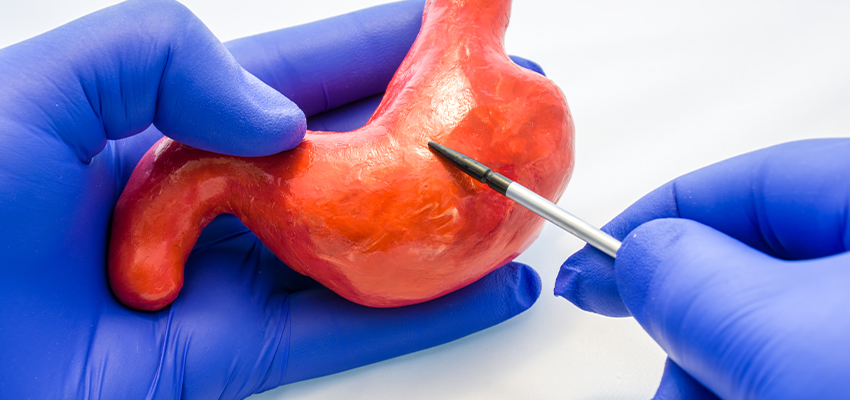Biliopancreatic Diversion with Duodenal Switch
Biliopancreatic Diversion with Duodenal Switch (BPD/DS) is a surgical operation where the stomach is reduced and the small intestine is connected to the duodenum after the stomach and pylorus muscle.
Biliopancreatic Diversion with Duodenal Switch involves two-step but is often performed as a single procedure. In some cases, the two applications can be done separately.
BPD/DS, which is a preferred surgery for weight loss, is generally applied to people with a body mass index above 50.
Biliopancreatic Diversion with Duodenal Switch: Candidates
If the patients have tried various weight loss methods without success and their body mass index (BMI) is over 50, or if their BMI is over 35 with obesity-related health conditions, they can be a good candidate for Biliopancreatic Diversion with Duodenal Switch. This procedure is usually recommended for individuals who:
- Have not achieved desired weight loss through diet and exercise alone
- Suffer from severe obesity that poses significant health risks
- Are committed to adopting a healthy lifestyle after the surgery.
Biliopancreatic Diversion with Duodenal Switch: Procedure Steps
Biliopancreatic Diversion with Duodenal Switch is a complex procedure that involves two stages. In the first stage, the surgeon performs a sleeve gastrectomy, reducing the stomach size by removing a portion of it. This reduces the amount of food the patient can consume, leading to early satiety.
The second stage involves rerouting the small intestine to change the way food is digested. The surgeon connects the end portion of the small intestine to the duodenum, bypassing a significant portion of the small intestine. This reduces the absorption of calories and nutrients, resulting in weight loss.
The procedure is performed under general anesthesia and requires an incision in the abdomen. Laparoscopic techniques may be used, allowing for smaller incisions and faster recovery.
Biliopancreatic Diversion with Duodenal Switch: Benefits and Risks
Biliopancreatic Diversion With Duodenal Switch offers several benefits for individuals struggling with obesity. There are the main ones listed below.
Benefits
- Significant Weight Loss : BPD-DS surgery can result in substantial weight loss, with many patients experiencing a loss of 60-80% of their excess body weight within the first 2 years.
- Improvement of Obesity-Related Health Conditions : This procedure can lead to the improvement or resolution of various obesity-related health conditions, including type-2 diabetes, high blood pressure, sleep apnea, and joint pain.
- Long-Term Weight Management : Biliopancreatic Diversion With Duodenal Switch provides long-term weight management, allowing individuals to maintain their weight loss over the years with proper lifestyle changes.
- Increased Quality of Life : Weight loss achieved through this procedure often results in an enhanced quality of life, increased mobility, improved self-esteem, and a reduced risk of obesity-related complications.
While BPD-DS offers numerous benefits, it is also important to consider the potential risks and complications associated with the surgery.
Risks
- Surgical Risks : Like any surgical procedure, Biliopancreatic Diversion With Duodenal Switch carries risks such as infection, bleeding, blood clots, and reactions to anesthesia.
- Nutritional Deficiencies : The rerouting of the small intestine can affect the absorption of essential nutrients, leading to vitamin and mineral deficiencies. Regular monitoring and supplementation are necessary to prevent deficiencies.
- Dumping Syndrome : Some patients may experience dumping syndrome, which occurs when food moves too quickly from the stomach to the small intestine. This can result in symptoms such as nausea, vomiting, diarrhea, and dizziness.
- Long-Term Lifestyle Commitment : BPD-DS requires a long-term commitment to dietary changes, regular exercise, and follow-up appointments with healthcare providers. Adherence to these lifestyle modifications is crucial for maintaining weight loss and overall health.
It is vital to discuss the BPD-DS benefits and risks with the surgeon to make an informed decision about whether this procedure is right or not.
Biliopancreatic Diversion with Duodenal Switch: Recovery Process
After the Biliopancreatic Diversion with Duodenal Switch procedure, the patient will be closely monitored in the hospital for a few days. Painkillers and antibiotics may be prescribed to manage discomfort and prevent infection.
The patients can expect to stay in the hospital for about 3-5 days following the surgery. During this time, medical professionals will monitor their condition and provide support.
Following the surgery, the person will be on a liquid diet initially, gradually progressing to soft foods and then solid foods. The surgeon and dietitian will provide specific dietary guidelines to follow.
The patient is encouraged to engage in light physical activity, such as walking, after the surgery. However, strenuous exercises should be avoided during the initial recovery period.
The patients should care for regular follow-up visits with their surgeon and healthcare team because they can monitor their progress and address any concerns.
The experienced staff of Health International has numerous successful operations in the field of Bariatrics. We perform the best and safest BPD-DS surgery in Turkey. Contact us to learn more about the procedures.

